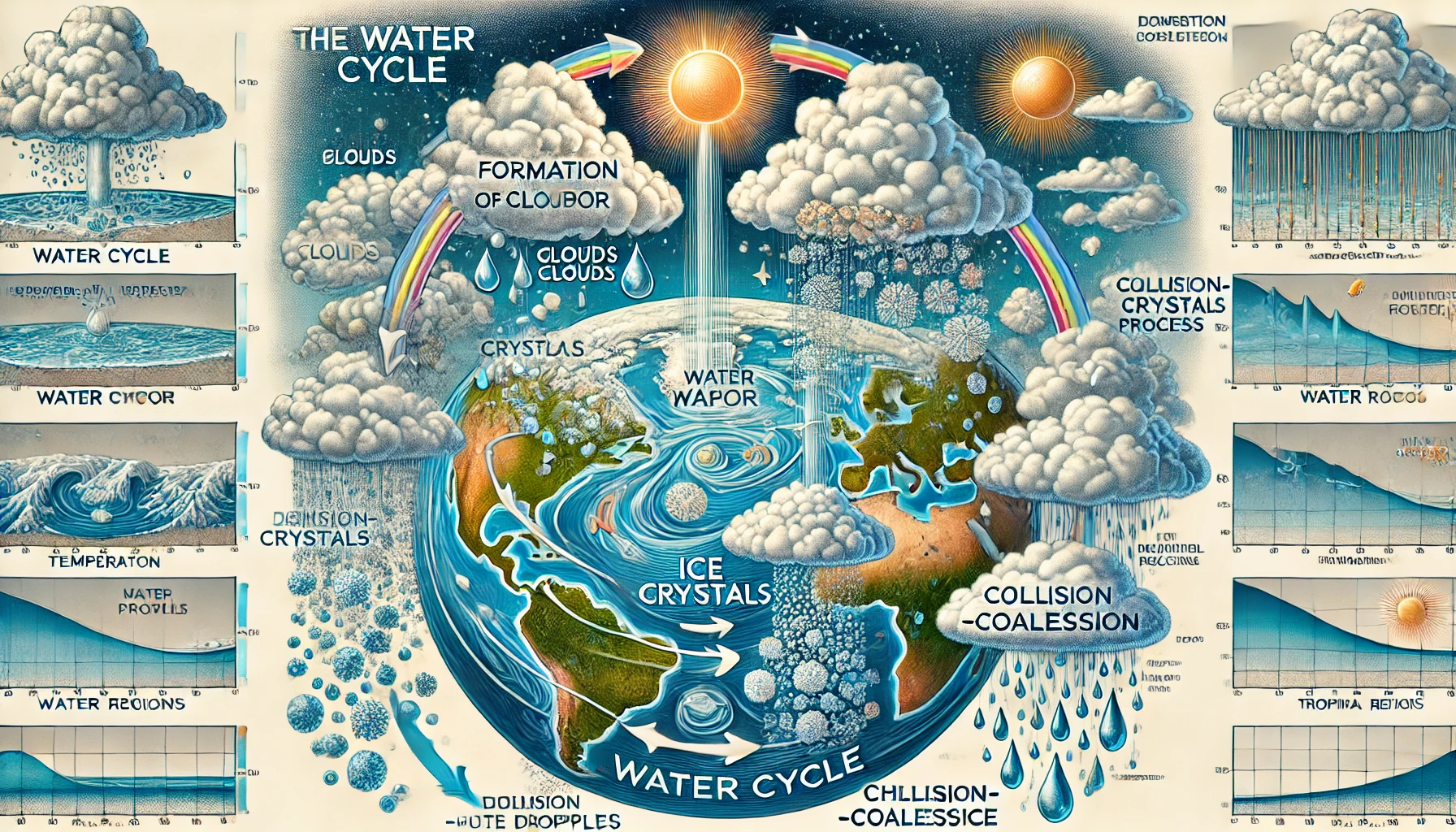Clouds are microscopic water droplets or ice crystals formed by the condensation of water vapor in the air. In temperate and boreal regions, precipitation is formed by the process of cryogenesis, and in the tropics, by the process of collision and merging, and falls as rain or snow. Precipitation plays an important role in the Earth’s water cycle and sustaining ecosystems.
How is precipitation, such as rain and snow, formed? Clouds are microscopic water droplets or tiny ice crystals suspended in the air, formed by the condensation of water vapor in the air, and when these droplets or ice crystals grow in clouds, they form precipitation.
The process of cloud formation begins when water vapor in the atmosphere condenses or sublimates. At this point, cloud particles are very small, about 0.01 millimeters in diameter, so they don’t evaporate easily. As the cloud particles bump into each other and merge, they grow larger and larger, falling to the ground as precipitation. The form of precipitation is determined by several weather conditions, including temperature, airflow, and atmospheric pressure. In temperate and boreal regions, ice crystals grow larger and produce precipitation. When the temperature in the clouds is between 0°C and minus 40°C, supercooled water droplets and ice crystals coexist in the clouds. Supercooled water droplets are small water droplets in the atmosphere that do not freeze at temperatures below 0℃ and remain liquid. However, below 0°C, the saturated water vapor pressure for supercooled water droplets is greater than the saturated water vapor pressure for ice crystals. Therefore, supercooled water droplets evaporate to become water vapor, which migrates to ice crystals. The displaced water vapor sticks to the ice crystals and gradually makes them larger. This process is known as crystallization. When these ice crystals fall to the ground, they become snow, and when they melt on the way down, they become rain. This process can also be applied to create artificial rainfall. When silver iodide is sprinkled on clouds, it helps to create ice crystals, which then grow and form snow or rain.

On the other hand, in the tropics, when the temperature in the clouds is above 0℃, ice crystals do not exist. Therefore, precipitation is formed in these regions through a different process than the ice crystal process. In clouds, water droplets of different sizes exist, and as they fall, relatively large droplets collide with smaller droplets and merge. The updrafts in the clouds cause the larger droplets to stay in the clouds longer and collide with the smaller droplets repeatedly. As the larger droplets fall, they collide with other droplets and merge, repeating the process. This process is called “collision-merging”. When millions of water droplets merge, they become raindrops and fall to the ground. The collision-collision process can also be used to artificially trigger precipitation by sprinkling water droplets or substances that absorb moisture from the air, such as salt particles, into the air to make the water droplets in clouds grow larger.
Precipitation plays an important role in the Earth’s water cycle. Precipitation keeps the earth’s surface moist, which is essential to keep ecosystems in balance. It also plays a big role in replenishing groundwater resources, providing water for agriculture and industry, and preventing natural disasters. For example, rain improves air quality by washing away dust and pollutants from the atmosphere, and adequate precipitation helps relieve droughts. On the other hand, excessive precipitation can cause flooding, which needs to be properly predicted and managed.
As you can see, precipitation is formed through a variety of weather conditions and processes, and it has a huge impact on our lives and the environment. Scientists are studying these processes to improve the accuracy of weather forecasts, advance artificial rainfall technologies, and help prevent natural disasters. Understanding the formation of precipitation and its impacts is crucial for climate change action and sustainable environmental management.